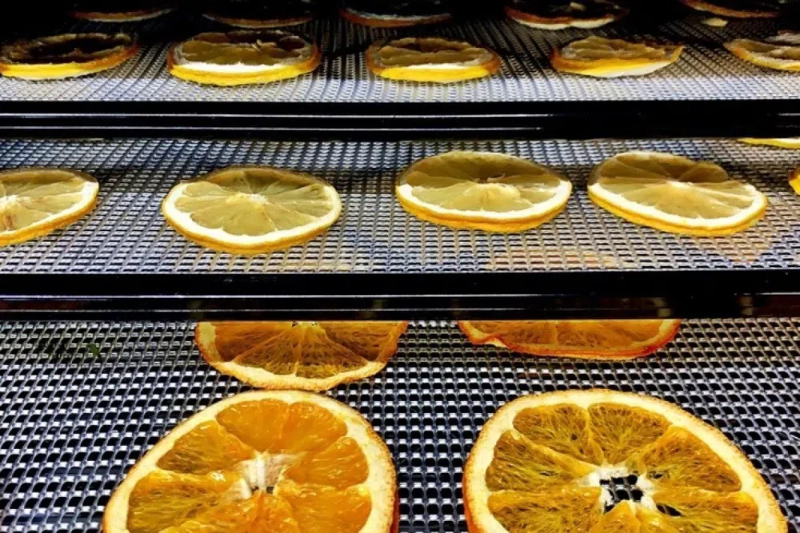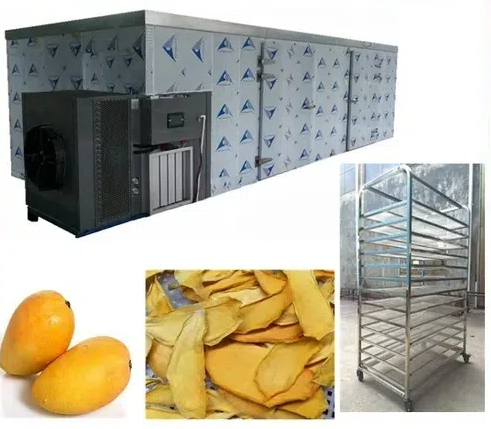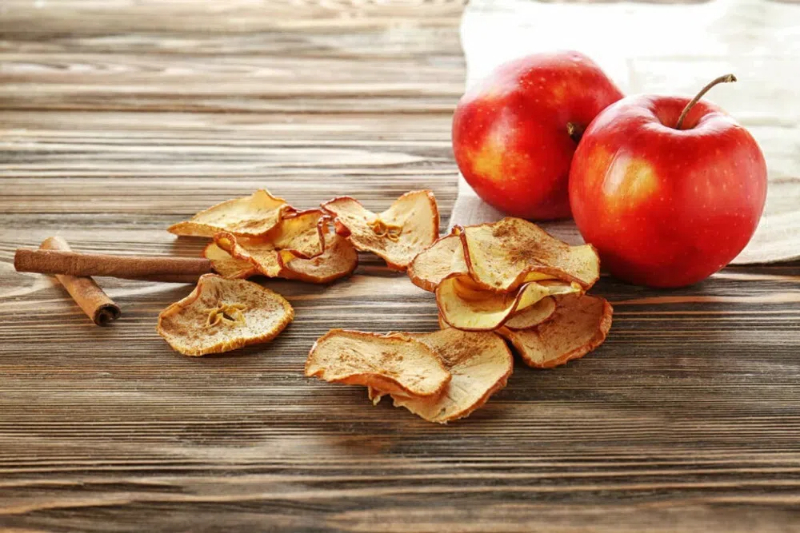
Content Menu
● Understanding Food Dehydration
● Benefits of Using a Food Dehydrator
● How Does a Food Dehydrator Work?
>> Steps to Use a Food Dehydrator:
● Types of Foods Suitable for Dehydration
● Creative Uses for a Food Dehydrator
● Common Mistakes When Using a Food Dehydrator
● Choosing the Right Food Dehydrator
● Conclusion
● FAQs
>> 1. How do you clean a food dehydrator?
>> 2. What types of foods can you dehydrate?
>> 3. How long does it take to dehydrate food?
>> 4. Can you use a regular oven instead of a dehydrator?
>> 5. Is it worth investing in a food dehydrator?
● Citations:
Food dehydrators have become increasingly popular among health-conscious consumers, home cooks, and food enthusiasts. These appliances are designed to remove moisture from foods, which helps preserve them for longer periods while retaining their nutritional value. This article explores the various benefits of using a food dehydrator, how it works, and the different types of foods that can be dehydrated.

Understanding Food Dehydration
Dehydration is one of the oldest methods of food preservation. It involves removing water from food, which inhibits the growth of bacteria, yeast, and mold. By reducing moisture content to below 20%, dehydrated foods can last for years without spoiling.
A food dehydrator typically consists of:
- Heating Element: Provides low, consistent heat.
- Fan: Circulates air to evenly distribute heat and moisture.
- Trays: Hold the food items being dehydrated.
The process usually takes several hours, depending on the type of food and the desired dryness level.
Benefits of Using a Food Dehydrator
1. Extended Shelf Life: Dehydrated foods can last up to five years when stored properly, making them an excellent choice for long-term storage.
2. Nutrient Preservation: Dehydration retains more vitamins and minerals compared to other preservation methods like canning or freezing. Studies show that dehydration results in only a 3-5% nutrient loss, whereas freezing can lead to a 40-60% loss.
3. Cost-Effective: By buying fruits and vegetables in bulk during peak seasons and dehydrating them, consumers can save money and reduce waste.
4. Healthy Snacking: Dehydrated fruits and vegetables make for nutritious snacks without added sugars or preservatives. Homemade fruit leathers, vegetable chips, and jerky are healthier alternatives to store-bought snacks.
5. Versatility in Cooking: Dehydrated foods can be used in various recipes—from soups and stews to salads and baked goods—adding flavor and nutrition without excess moisture.
6. Reduced Food Waste: A dehydrator allows users to utilize surplus produce that might otherwise spoil. This is particularly beneficial for gardeners or those who buy in bulk.
7. Easy Preparation: Most foods require minimal preparation before dehydration—often just slicing or blanching—making it a straightforward process.
8. Space-Saving Storage: Dehydrated foods take up significantly less space than their fresh counterparts, making them easier to store in pantries or cupboards.
How Does a Food Dehydrator Work?
Food dehydrators operate by circulating warm air at low temperatures (typically between 95°F to 165°F). This gentle heat evaporates moisture from the food while preserving its color and flavor.

Steps to Use a Food Dehydrator:
1. Preparation: Wash and slice fruits or vegetables uniformly for even drying.
2. Blanching (if necessary): Some vegetables benefit from blanching before dehydration to preserve color and texture.
3. Arranging on Trays: Place prepared food items on the trays without overlapping.
4. Setting Temperature & Time: Adjust the temperature according to the type of food (e.g., fruits at 135°F, vegetables at 125°F).
5. Monitoring Dryness: Check periodically until the desired dryness is achieved.
6. Storage: Once dried, store in airtight containers away from light and moisture.
Types of Foods Suitable for Dehydration
Almost any food can be dehydrated, but some popular options include:
- Fruits: Apples, bananas, berries, mangoes
- Vegetables: Carrots, bell peppers, tomatoes
- Herbs: Basil, oregano, thyme
- Meats: Beef jerky, turkey jerky
- Grains & Legumes: Cooked rice or beans can also be dehydrated for later use.
Creative Uses for a Food Dehydrator
Beyond traditional uses like drying fruits and making jerky, a dehydrator can be employed in various innovative ways:
- Making Fruit Leathers: Puree fruits with little sweetener and dehydrate until pliable.
- Creating Seasoning Powders: Dehydrate vegetable scraps or herbs and grind them into powders for seasoning.
- Crafting Snacks for Hikers/Campers: Lightweight snacks like trail mix can be made by combining dehydrated fruits, nuts, and seeds.
- Preparing Pet Treats: Use leftover meats or vegetables to create healthy pet snacks.
- Fermenting Foods: Maintain low temperatures for yogurt or other fermented products.
Common Mistakes When Using a Food Dehydrator
While using a food dehydrator is relatively straightforward, there are common mistakes that users should avoid:
- Skipping Pre-Treatment Processes: Many people skip pre-treating fruits and vegetables before drying them. This step can prevent discoloration and enhance flavor by soaking them in lemon juice or blanching them beforehand[1][2].
- Overloading the Dehydrator: Overloading trays with too much food can hinder proper air circulation, resulting in uneven drying[2][4].
- Ignoring Consistent Slicing: Cutting food into uneven sizes leads to inconsistent drying times; smaller pieces may dry out too quickly while larger ones may remain moist[2][4].
- Not Monitoring Temperature Settings: Using incorrect temperature settings can result in improperly dried food; too high temperatures may cook the food instead of drying it[2][10].
- Inadequate Storage Practices: Improper storage of dehydrated food can lead to loss of quality; store dried foods in airtight containers away from light[2][5].
Choosing the Right Food Dehydrator
When selecting a food dehydrator, consider the following features:
- Adjustable Temperature Settings: Essential for safely dehydrating different types of ingredients.
- Capacity: Depending on your needs, choose between models with multiple trays or larger capacities for bulk dehydration.
- Ease of Cleaning: Look for models with dishwasher-safe parts or those that are easy to wipe down after use[3][6].
Some top-rated models include:
- Cosori Stainless Steel Dehydrator: Known for its customizable time and temperature settings with even drying results.
- Nesco Gardenmaster Food Dehydrator: Offers digital controls with customizable temperature settings but may have inconsistent results between trays[3][6].
Conclusion
Food dehydrators are invaluable tools for anyone looking to extend the life of their food while maintaining its nutritional value. They offer an eco-friendly way to reduce waste and save money while providing delicious homemade snacks that are free from additives. The versatility of dehydrators allows users to experiment with various foods and recipes while avoiding common pitfalls that could lead to disappointing results.

FAQs
1. How do you clean a food dehydrator?
Most trays are dishwasher-safe; however, check your user manual first. If not safe for dishwashers, wash with warm soapy water and rinse thoroughly before drying.
2. What types of foods can you dehydrate?
You can dehydrate almost anything—fruits like apples and bananas; vegetables such as carrots; meats like beef jerky; herbs; grains; even yogurt!
3. How long does it take to dehydrate food?
Dehydration times vary based on the type of food being dried and the thickness of slices but generally range from 4 to 12 hours.
4. Can you use a regular oven instead of a dehydrator?
While it's possible to use an oven at low temperatures for dehydration, it's less efficient than a dedicated dehydrator due to uneven heat distribution.
5. Is it worth investing in a food dehydrator?
Yes! A food dehydrator saves money by reducing waste and allows you to make healthy snacks at home without preservatives or additives.
Citations:
[1] https://www.cnet.com/pictures/tips-for-using-your-new-dehydrator/
[2] https://crownful.com/blogs/tips/mistakes-to-avoid-when-you-are-using-dehydrator
[3] https://www.thespruceeats.com/best-food-dehydrators-4077285
[4] https://www.backpackingchef.com/dehydrating-food.html
[5] https://dehydratedfoodz.com/issues-with-food-dehydrators/
[6] https://www.seriouseats.com/best-food-dehydrators-5216308
[7] https://learn.eartheasy.com/guides/a-beginners-guide-to-dehydrating-food/
[8] https://www.linkedin.com/pulse/common-questions-food-dehydrators-aradmachinery
[9] https://www.backpackingchef.com/food-dehydrator.html
[10] https://www.freshoffthegrid.com/dehydrating-food/
[11] https://foodal.com/knowledge/things-that-preserve/11-tips-to-dehydrate-food/
[12] https://www.youtube.com/watch?v=SwELNvW5YSo
[13] https://www.nytimes.com/wirecutter/reviews/best-food-dehydrator/
[14] https://homesteadingfamily.com/preservation-101-intro-to-dehydrating-food/
[15] https://nymag.com/strategist/article/best-food-dehydrators.html
[16] https://www.allrecipes.com/article/how-to-use-a-food-dehydrator/
[17] https://www.allrecipes.com/longform/best-food-dehydrators/
[18] https://www.eatingwell.com/affiliate/7904760/best-food-dehydrators/
[19] https://www.wonderlandguides.com/backcountry-cooking/dehydrating-food/food-dehydrating-101
[20] https://www.foodandwine.com/lifestyle/kitchen/best-food-dehydrators











